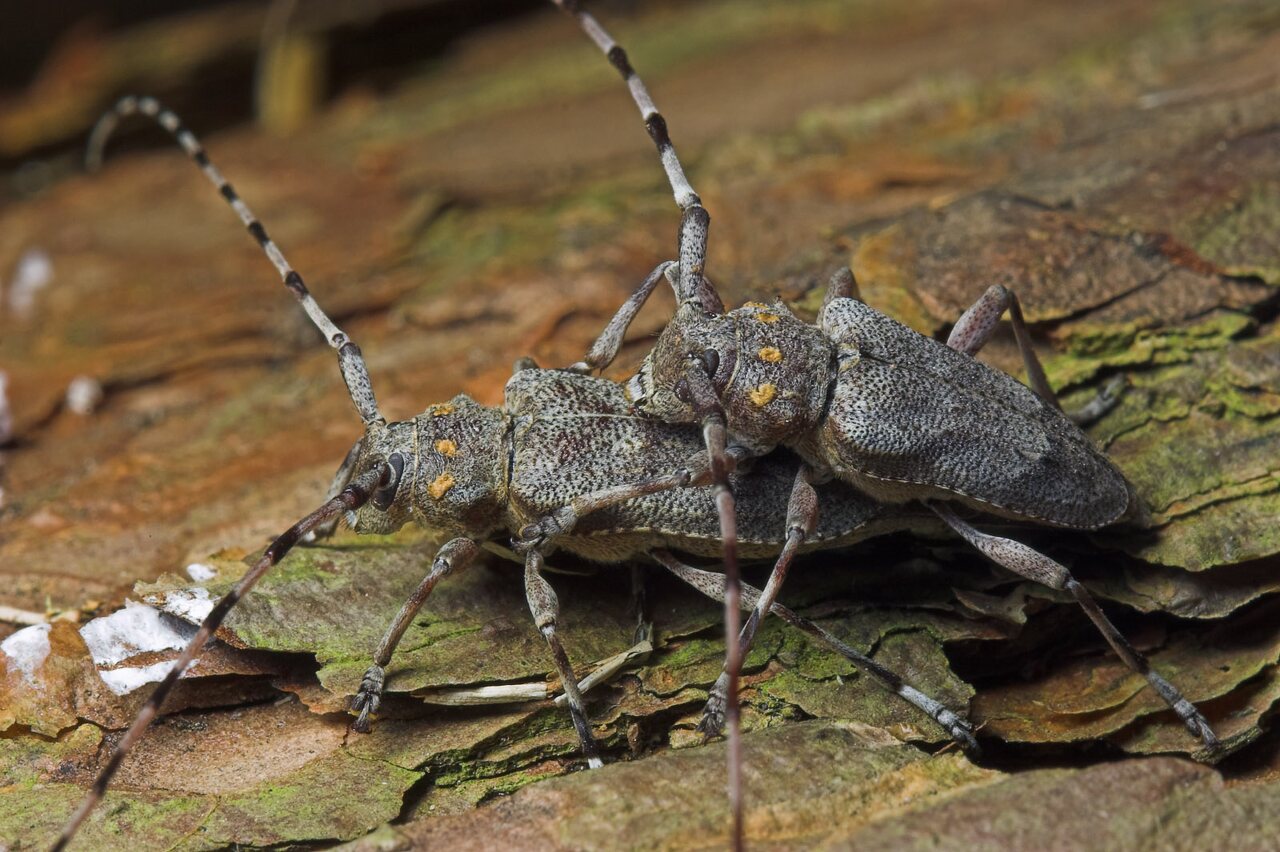
Acanthocinus aedilis mating · ilgaūsis pušiagraužis poruojasi
on Pinus sylvestris - ant paprastosios pušies
- timberman beetle, Siberian timberman
- Zimmermannsbock, Zimmerbock, Schneiderbock
- ilgaūsis pušiagraužis
- priežu koksngrauzis, priežu malkcirtis
- tycz cieśla
It is found in woodlands, with a large distribution through Europe, Russia and Central Asia. The body length ranges from 12-20mm, with antennae up for 3 times the body length in males, or 1.5 times the body length in females. Their lifespan is up to 3 years which includes the 1–2 years spent in the larval stage. This species is capable of surviving freezing temperatures below -37 °C in both the adult and larval stages. The adults are active from March to June, during which they are diurnal. The adults overwinter in pupal chambers in leaf litter or under the bark. In Continental Europe, this species has become a serious pest of commercially-grown timber as the larvae feed under the bark, weakening the trees.
Kūnas 12-20 mm ilgio, trumpas, plokščias, platus, rudas, apaugęs pilkšvais plaukeliais. Turi labai ilgas antenas, patinų trečdaliu ilgesnės. Antsparniai su dviem įžambiais siaurais, šviesiai rudais skersiniais raiščiais. Vabalai skraido balandžio – gegužės ir rugpjūčio – rugsėjo mėnesiais. Lervos gyvena po spygliuočių žieve.
Subfamily: Lamiinae · niūrūnėnai
‥
0 comments
Add a comment